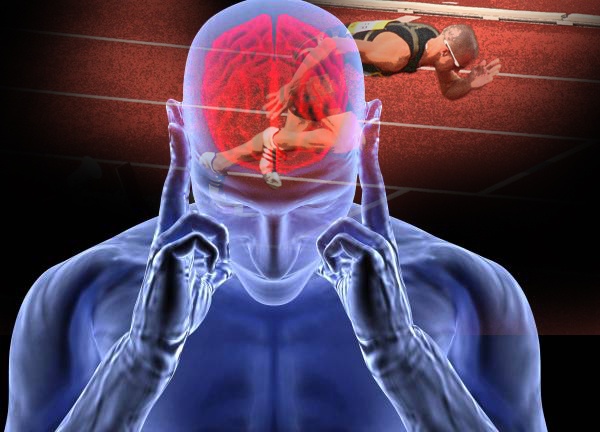Boosting Performance
Mental Visualization Techniques in Triathlons

Mental visualization techniques have long been recognized as valuable tools for enhancing performance in various sports. In the world of triathlons, where physical endurance and mental fortitude are equally crucial, incorporating mental visualization into training can significantly boost an athlete’s performance. In this article, we will explore the power of mental visualization techniques and how they can be utilized to maximize performance in triathlons.
Unleashing the Power of Mental Visualization in Triathlon:
Enhancing Performance through the Mind’s Eye: The sport of triathlon demands physical endurance, mental resilience, and strategic decision-making. While physical training is crucial, harnessing the power of mental visualization techniques can give triathletes a competitive edge. In this blog article, we will delve into the world of mental visualization in triathlon and explore how it can enhance performance. By understanding the importance of mental imagery, triathletes can unlock the potential of their minds and optimize their training and racing experiences.
Mental Visualization in Triathlon: What is it? Mental visualization in triathlon refers to the process of creating detailed mental images or scenarios related to different aspects of the sport. This includes visualizing each discipline individually (swimming, cycling, running) as well as transitions between them. Through focused imagination, athletes simulate their race performance, envisioning each stage from start to finish with precision and clarity.
How Does Mental Visualization Work in Triathlon?
Strategic Decision-Making: Visualizing the race course allows triathletes to familiarize themselves with its terrain and potential challenges. Athletes can mentally anticipate any tough spots, plan their energy expenditure, and strategize their approach to maximize efficiency during the race.
Technique Enhancement: Mental visualization enables triathletes to refine their technique without physically exerting themselves. Imagining perfect swim strokes, smooth pedal revolutions, and efficient running form helps reinforce muscle memory and motor patterns. This practice improves efficiency and reduces wasted energy on race day.
Conquering Nerves and Overcoming Setbacks: Mental imagery plays a vital role in managing nerves and overcoming setbacks. By envisioning successful performances, triathletes build confidence, reducing pre-race anxiety. Visualizing resilience and adaptability during challenging situations also prepares athletes for unexpected barriers, allowing them to respond positively and compete at their best.
Training Reinforcement: Mental visualization serves as an extension of physical training. By mentally rehearsing workouts, athletes reinforce their training efforts, improving muscle memory and technique. This mental practice complements physically demanding sessions, optimizing overall performance and progression.
Unleashing the Power of Mental Visualization in Triathlon
Pre-Race Routine: Integrating mental visualization into pre-race routines primes athletes for success. Taking a moment to close their eyes and vividly imagine each discipline, visualizing transitions, and picturing themselves crossing the finish line can instil confidence and a focused mindset before diving into the race.
Pacing and Effort Management: Visualization techniques help triathletes gauge and manage their pacing during different race segments. By visualizing exertion levels and monitoring physiological sensations in their mind’s eye, athletes can calibrate their effort to avoid early burnout while ensuring optimal performance throughout the race.
Positive Self-Talk: Mental visualization is an excellent opportunity to harness the power of positive self-talk. Encouraging oneself, repeating mantras, and reinforcing belief in one’s abilities creates a positive internal dialogue that empowers triathletes on race day. Visualizing successful outcomes further reinforces positive thinking, enhancing performance.
Mental Rehearsal: Mental imagery allows triathletes to mentally rehearse their race strategies repeatedly. Visualizing specific scenarios, such as handling open water swimming or smoothly transitioning between disciplines, enhances adaptability and problem-solving skills. This mental rehearsal prepares athletes to make split-second decisions during races, improving overall performance.
Post-Race Analysis: Mental visualization extends beyond race day. Using this technique during post-race analysis helps athletes identify areas for improvement. By mentally replaying different sections of the race – reflecting on tactics, pacing, and aspects that went well or could have been better – triathletes gain insights that guide future training and race-day strategies.
Mental visualization is a powerful tool that triathletes can utilize to optimize their training and race performance. Incorporating detailed mental imagery into their preparation routines allows athletes to fine-tune technique, enhance decision-making, manage nerves, and reinforce training efforts. By leveraging the power of the mind’s eye, triathletes can unlock hidden potential and achieve peak performance in the exhilarating world of triathlon.
The Benefits of Mental Visualization

Improved Technique: Mental visualization allows athletes to mentally rehearse perfect technique without the limitations imposed by physical fatigue or external factors. This helps reinforce proper form and movement patterns, leading to improved efficiency and reduced risk of injury.
Enhanced Confidence: Visualization techniques help athletes build confidence by visualizing themselves overcoming challenges and achieving their goals. By repeatedly seeing themselves succeed in their mind’s eye, athletes can develop a positive belief system and self-assurance that translates into improved performance on race day.
Reduced Anxiety: Triathlons can be mentally and emotionally taxing. Mental visualization allows athletes to navigate high-pressure situations in their imagination, helping them manage anxiety and stay focused during the race.
Goal Setting and Motivation: By visualizing their desired outcomes and goals, triathletes can stay motivated throughout their training and races. Mental imagery facilitates goal-setting by making dreams feel more tangible and attainable.
Key Mental Visualization Techniques for Triathlons:
Visualization Practice: Find a quiet and distraction-free environment where you can focus on your mental imagery. Close your eyes and vividly imagine each segment of the triathlon – from the start line to the finish line. Engage all your senses, imagining how the water feels during the swim, the wind on your face during the bike ride, and the sound of footsteps during the run.
Positive Outcome Visualization: Visualize yourself accomplishing your goals in detail. Imagine crossing the finish line with a sense of triumph or breaking personal records. The more you immerse yourself in positive outcomes, the more likely they are to become a reality.
Course Familiarization: Before a race, study the course map and terrain. Use mental imagery to simulate every turn, hill, and transition point along the route. Visualize yourself navigating through each section smoothly and confidently.
Pre-Race Routine Visualization: Create a pre-race routine that helps you get into the right mindset before each event. Visualize yourself going through this routine in a calm and focused manner, incorporating deep breaths, stretches, positive affirmations, and mental preparation for each leg of the race.
Overcoming Challenges Visualization: Triathlons often present unexpected challenges. Visualize potential obstacles such as adverse weather conditions, equipment malfunctions, or fatigue. Mentally rehearse your responses to these challenges, envisioning yourself staying calm, adapting, and overcoming them.
Visualization During Training: Incorporate mental visualization techniques during training sessions to reinforce physical improvements. Visualize every stroke during swimming practice, the smooth pedal strokes during cycling, and the steady rhythm of your running stride.
Integrating Mental Visualization into Training:
 Consistency: Regularly dedicate time to practising mental visualization techniques throughout your training program. Consistent practice will help you develop a strong mental toolbox that becomes second nature on race day.
Consistency: Regularly dedicate time to practising mental visualization techniques throughout your training program. Consistent practice will help you develop a strong mental toolbox that becomes second nature on race day.
Visualization Journals: Maintain a visualization journal to note down your mental imagery experiences and insights. Reflecting on these visualizations can deepen your understanding of the techniques and track your progress over time.
Guided Visualization: Utilize guided visualization recordings or apps to assist with mental imagery practice. These resources can provide structure and guidance, allowing you to focus more effectively during visualization sessions.
Multisensory Experience: Engage as many senses as possible while mentally rehearsing. Visualize, imagine, and feel the sensations associated with each segment of the triathlon, such as cool water, wind on your skin, and the rhythmic sound of your footsteps.
Bringing Mental Visualization Techniques to Race Day:
Visualization Warm-up: Before starting the race, engage in a brief visualization warm-up. Close your eyes and mentally replay successful visualizations of previous races or training sessions. This primes your mind for success and helps build confidence.
Visualization Cues: Develop specific cues or triggers that prompt visualization during the race. For example, when gliding through the water during the swim leg, visualize yourself swimming with ease and speed. By associating certain actions with corresponding visualizations, you can reinforce positive mental states throughout the race.
Positive Self-Talk: Combine mental visualization with positive self-talk to maintain a focused and motivated mindset during the race. Remind yourself of successful visualizations and reaffirm your strengths and abilities.
Adaptation Visualization: In case unexpected challenges arise during the race, quickly adjust your mental imagery to accommodate new circumstances. Picture yourself adapting to changes seamlessly and effectively.
Mental visualization techniques offer an invaluable toolset for triathletes looking to enhance their performance. By consistently practising mental imagery, triathletes can improve technique, build confidence, manage anxiety, and stay focused during races. Through visualization, athletes can effectively rehearse race scenarios, develop mental fortitude, and increase their odds of success. By incorporating mental visualization into training regimens and utilizing it on race day, athletes can unlock their full potential and achieve peak performance in triathlons.










